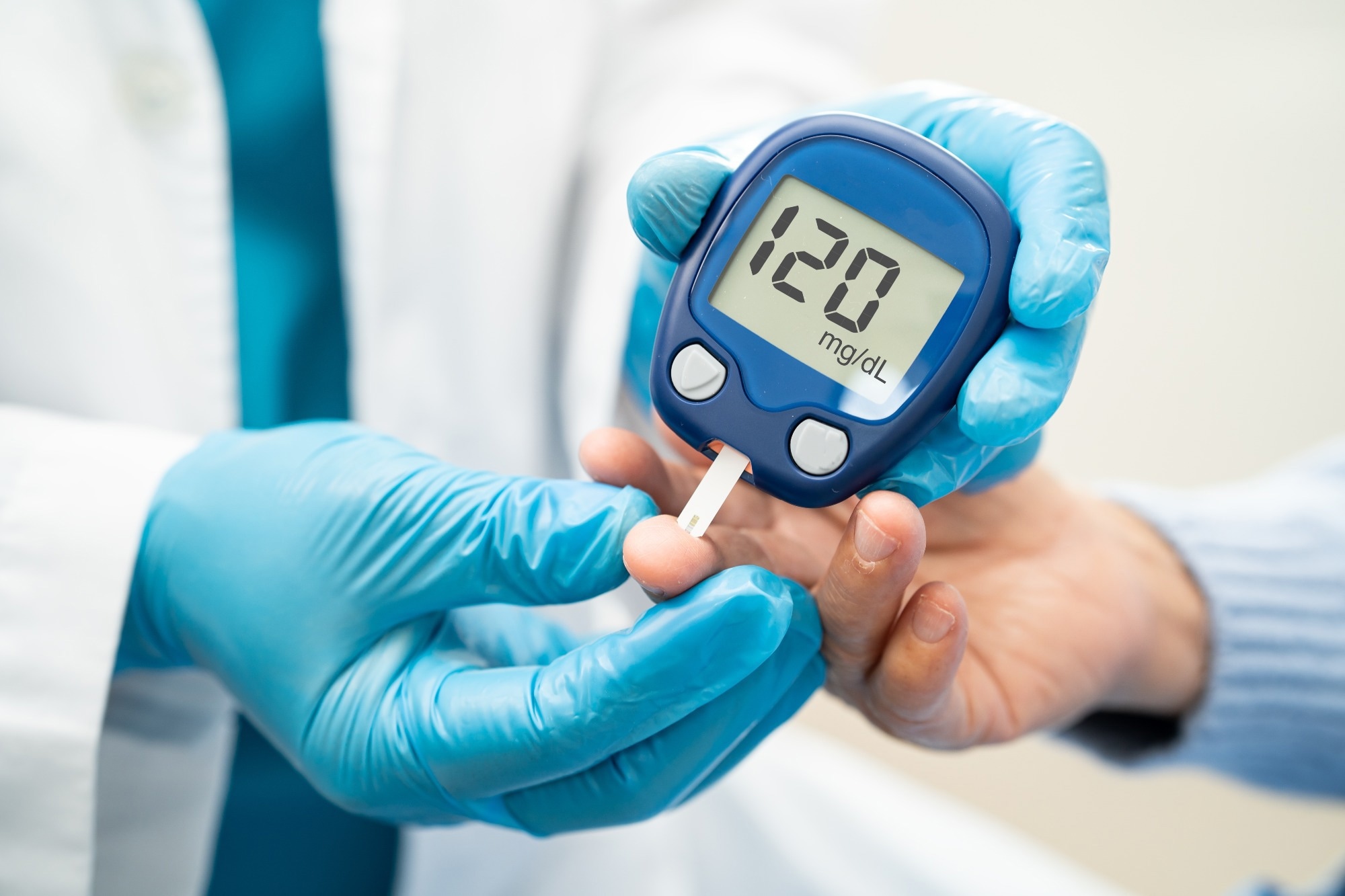Could a simple fiber supplement curb hunger and keep insulin in check? New research finds that this mineral-rich blend helps people feel fuller without raising blood sugar levels.
 Study: Impact of a mineral enriched, fiber complex on glycaemic response and satiation in healthy adults: a double-blind, crossover intervention study. Image Credit: superbeststock / Shutterstock
Study: Impact of a mineral enriched, fiber complex on glycaemic response and satiation in healthy adults: a double-blind, crossover intervention study. Image Credit: superbeststock / Shutterstock
In a recent study published in the European Journal of Nutrition, researchers investigated the effects of a mineral-enriched fiber complex on satiation and glycemic response. Obesity and overweight have become a significant global health concern and pose substantial economic challenges to global healthcare systems. Excessive fat accumulation is a significant risk factor for various metabolic disorders. Weight gain in early adulthood is associated with an increased risk of diabetes, cardiovascular disease (CVD), and CVD mortality, compared to that in later life. This suggests the need for early interventions to support weight management and alleviate risks.
Efforts to maintain a healthy weight can be challenging. Recent anti-obesity strategies have been revolutionized by glucose-dependent insulinotropic polypeptide and glucagon-like peptide 1 receptor agonists. However, these interventions often have undesirable effects, such as diarrhea, nausea, abdominal pain, vomiting, and constipation. Therefore, given the risks, limitations, and suitability of pharmaceutical approaches, functional foods and supplements could be a beneficial alternative.
About the study
In the present study, researchers investigated the impact of chromium-enriched glucomannan-fructo-oligosaccharide (FOS) complex, i.e., SlimBiome (SB), intake on satiety and glycemic response in healthy adults. This randomized, crossover intervention trial recruited healthy adults aged 18–65, with normal fasting glucose levels and body mass index (BMI) between 18.5 kg/m² and 24.9 kg/m². Subjects made three visits to the laboratory.
The first was a screening and familiarization visit. Blood pressure, body fat percentage, and anthropometric indices were measured at the first visit. Participants were required to fast for 12 hours before each visit and refrain from consuming large meals and alcohol the previous day. Visits 2 and 3 were completed in a randomized order with a washout period of at least two days between them. A modified oral glucose tolerance test (OGTT) was performed at visits 2 and 3.
Blood was collected to measure fasting glucose and insulin levels. Participants consumed a dextrose drink at visit 2 or an SB plus dextrose (SBD) drink at visit 3, following which blood samples were collected at several time points (up to 2.5 hours) after intake. In addition, participants completed a questionnaire on subjective measures of appetite at 0 (baseline), 75, and 150 minutes post-intake; responses were recorded on the visual analog scale (VAS).
A rapid viscoanalyzer was used to assess the viscosity kinetics of SB, SBD, and dextrose under gastric pH conditions. The area under the curve for insulin (AUCins) and glucose (AUCglu) was calculated. Further, insulin sensitivity was calculated using the Matsuda and Cederholm indices. Repeated-measures analysis of variance was performed to examine differences in insulin and glucose levels between the interventions (SBD and dextrose).
Findings
The study recruited eight females and eight males. Blood glucose levels remained unchanged and were not significantly different between dextrose and SBD conditions at any time during OGTT. Notably, plasma insulin levels were significantly lower 45, 75, and 90 minutes after SBD intake compared to those after dextrose intake. Importantly, early insulin response (within 30 minutes) showed no significant difference between interventions. AUCins was significantly lower with SBD compared to dextrose, but AUCglu was not significantly different between conditions.
Glucose levels were significantly higher at 75 minutes and lower at 150 minutes post-intake than at baseline in both conditions. Meanwhile, insulin levels were higher at 75 minutes than at baseline with both interventions. Insulin values at baseline and 150 minutes were not different with either intervention.
Baseline VAS scores did not differ significantly between the dextrose and SBD conditions. However, significant increases were observed over time in the amount of food desired and hunger between baseline and 150 minutes upon dextrose intake. On the other hand, SBD intake significantly increased fullness 75 minutes post-intake.
Crucially, at 150 minutes post-intake (but not earlier), subjects reported being significantly less hungry and fuller with SBD than with dextrose across all appetite metrics (including desire to eat and amount of food desired). SBD and SB attained maximum viscosity between 15 and 20 minutes and stabilized thereafter. The viscosity of dextrose was significantly lower than that of SBD and SB. However, there were no differences between SB and SBD.
The researchers noted that chromium levels (15 µg/dose) were likely too low to drive effects, suggesting benefits primarily stem from fibers' viscosity-related mechanisms. As an acute study, long-term effects remain unexplored.
Conclusions
In summary, SBD significantly reduced insulin levels at 45, 75, and 90 minutes, as well as AUCins at 150 minutes post-intake, compared to dextrose, without affecting glucose levels. This underscores the potential beneficial impact of SB on postprandial insulin response. SBD intake resulted in later-occurring (150 min) lower sensations of hunger and increased fullness. These findings offer valuable insights and suggest the potential use of SB in weight management strategies, though longer-term studies are needed to confirm effects.
Journal reference:
- Ancu O, Mackenzie RWA, Patterson M, et al. Impact of a mineral enriched, fiber complex on glycaemic response and satiation in healthy adults: a double-blind, crossover intervention study. European Journal of Nutrition, 2025, DOI: 10.1007/s00394-025-03732-8, https://link.springer.com/article/10.1007/s00394-025-03732-8